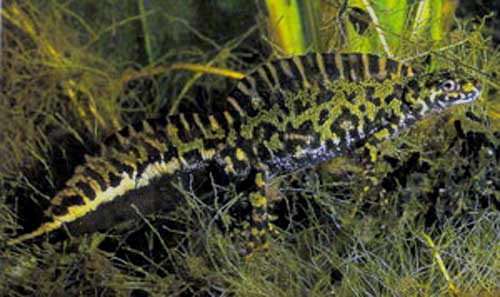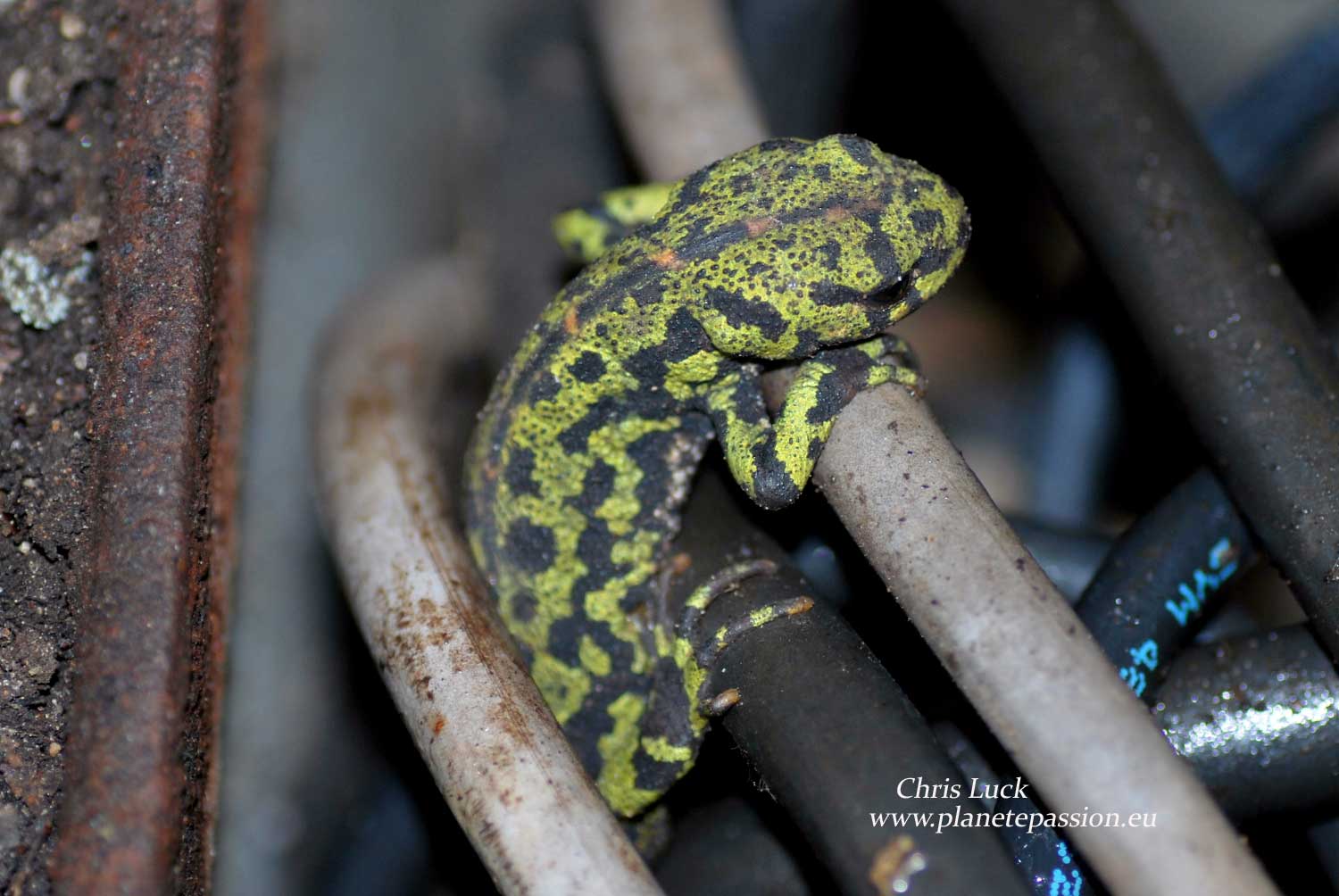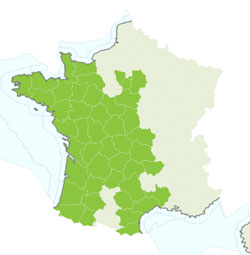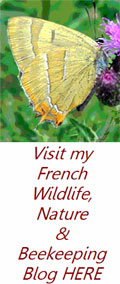Triton Marbré
Triturus marmoratus
Marbled Newt
Marbled Newts are one of the larger newts in France.
Males grow to 14 cm and females to 17 cm. They have a robust appearance with a large head and any confusion with the Crested Newt is easily avoided by the size of their head and the bold colouration of the body which is a vivid green marked with black spots. Females and Juveniles have an orange band bordered with thin black lines running down the centre of the back. Males in terrestrial phase have a slightly raised crest with occasional orange marks, in aquatic breeding phase this crest becomes much larger and is green with vertical black bands, but smoother in outline than the Crested Newt.
They are confined to lower altitudes and don't live above 1000 metres
They have a preference for habitats with bushy cover, hedgerows and woodlands. Various types of water are used for their eggs including lakes, ponds, canals and even large ditches or ruts although rarely where fish are present. Acid or slightly saline water is acceptable. In their terrestrial phase they live in wet or damp places, wetlands and occasionally in cellars, inspection pits and the like. Prey is made up of insects, small slugs, caterpillars etc. Activity is generally nocturnal. Hibernation or reduced activity occurs from October until February in various cavities that are frost free such as under log piles, in cellars, caves and other underground places, occasionally in sheds and houses.
They start to make their way to the water for reproduction in early February when it is mild and continue until mid May when a female will lay around 400 eggs. These hatch after about 16 days and metamorphosis follows in 2 to 3 months. Adults usually leave the water immediately after breeding. Sexual maturity is reached after about 6 years during which time the juveniles remain on land. Lifespan is a maximum of 14 years.




